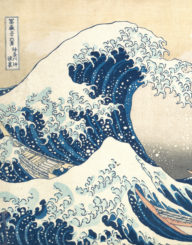Writers often ask us for advice on how to get published. There are two paths to travel: traditional publishing and self-publishing. Both models encompass digital and print. Which direction you choose will be determined by various factors. Here are some things you should consider.
Traditional Publishing
If you go the traditional route, the benefits are many. Your manuscript is professionally edited. The interior and cover are expertly designed. The publisher prints, distributes, markets, promotes, and sells the book, and they take care of the accounting and legal costs. You have a whole team of people backing you up and helping with the stuff you might not otherwise have the time or resources for. The cost to you is their cut of the sales.
Before you deal with a publishing house, it’s helpful to think about their mindset. The company as a whole doesn’t care if you’ve spent years working on your novel and sent out hundreds of query letters. To them, a story is only as valuable as its ability to make a profit—unless they are producing it as a prestige project that they know is likely to lose money. They need to make gains on their investment in the books they print. If they didn’t take this approach, they wouldn’t be in business for long.
So when you approach a publisher with your manuscript, they want to know what this book can do for them. What markets does it target? How much capital will it take to secure the author’s intellectual property? How much of an investment will they need to make in editing, production, marketing, distribution, sales efforts, warehousing, accounting, legal, etc.? What is their potential return? A writer may have what they think is the best book ever, but the publishing companies need a way to quantify that claim. And there are lot of unknowns.
I say this not to discourage you, but to help you understand the reality of the business. You are competing against the best, so make your product (yes, I know it’s your baby, but now you have to see it as a product) as professional as possible.
Self-publishing
What about self-publishing, where you do most or all of these steps yourself? This method attracts independent-minded people who want control of their project and profits. You can make a book available in digital format very quickly when compared to traditional publishing timetables, which can take years. Upload it to Kindle Direct Publishing, iBooks, or Smashwords and it will be available in a few days.
This can be a good deal and is inexpensive. You retain most of the earnings, . . . but it requires you to be a jack of all trades. Remember, the percentage that you give up in a standard publishing deal pays for editing, book design, marketing, promotion, printing and distribution, accounting, and legal costs. These are things you cover yourself. If you can’t do each of these jobs—and they are full-time endeavors—you’ll need to hire others to help.
Print-On-Demand (POD) is a good choice for an author who can carry out the functions of a publisher. Lightning Source, one such service, offers clients access to the Ingram distribution system, so stores can order the desired number of titles directly from Ingram. (But they won’t order your novel unless someone wants it; you must market the project to get people excited about it.) Some companies, including Lightning Source, will also print and deliver the books to you or a distributor with whom you have contracted. This is the approach we took when publishing Eragon; we had the books shipped to our home.
In addition to POD, there are hybrid programs, like the ones offered by Smashwords, iUniverse, CreateSpace (owned by Amazon), and Lulu. They provide an ISBN, design a cover, and arrange for the accounting and delivery of product while you take care of the rest.
A Combination?
Another avenue is a combination of traditional and self-publishing. For example, a writer generates a large fan base for his or her self-published novel and then partners with a traditional publishing house. Or the reverse, in which an author who is with a traditional publisher decides to use self-publishing for one of their subsequent projects. These are dynamic ways to maximize not only the speed of getting product to recipients, but also economies of scale and distribution.
I hope that this article has given you a few things to consider before deciding on your next step. Regardless of the which strategy you choose, the major challenge is to promote the book, thereby creating sales and momentum. You or your publisher can’t just print a novel and expect it to do well without a lot of effort. Get out there and share your creation!
Wishing you well on your journey,
Kenneth
Want more advice? Check out the rest of the Writers Corner!


